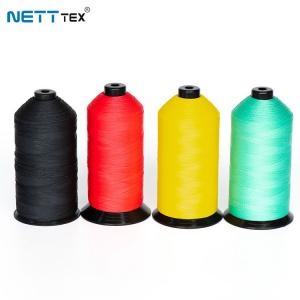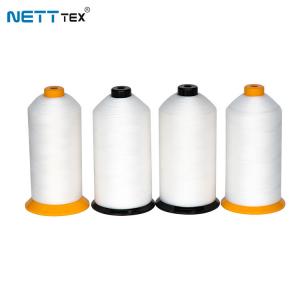How can consumers distinguish the authenticity of high-quality PTFE sewing thread from fake?
2025-09-28
With the surge in demand for industrial-grade sewing thread, the market is flooded with cheap synthetic fibers being passed off as high-end PTFE sewing thread. So how can we distinguish?

Identification by Fire
The authenticity of PTFE sewing thread can be determined by observing its combustion reaction. When placed near a flame, genuine PTFE sewing thread will simply curl and glow red, but no flame will appear. It will extinguish immediately after being removed from the flame, emitting a faint white smoke. Fake PTFE sewing thread, on the other hand, will ignite immediately, producing black smoke and a pungent odor. Furthermore, after being burned, a gentle pull on the PTFE sewing thread will reveal that genuine PTFE sewing thread retains its toughness, while counterfeit PTFE will shatter at the slightest tug.
Density Testing
Density differences can also be used to distinguish the authenticity of PTFE sewing thread. When a 10 cm section of thread is dropped into water, genuine PTFE will sink quickly due to its greater density than water. Counterfeit PTFE blended with nylon or polyester will float to the surface, as it has a lower density than water. However, some unscrupulous vendors may use glass microbeads to increase weight, so it's best to verify the product in conjunction with a fire test.

Verify product labels and inkjet codes
Regulated PTFE sewing thread must have an identification label. This includes a batch inspection report, anti-counterfeiting laser inkjet codes, performance markings on the packaging, and a QR code for raw material traceability. Counterfeit products often lack these or have codes that are blurry and difficult to read. When purchasing, you can scan the code to verify. If it doesn't scan or doesn't display the official website, it's likely a fake. Be careful to identify it and avoid being deceived.
Be aware of safety and potential risks
Fake PTFE sewing thread poses a threat to our health and safety. Some counterfeit products have been found to contain plasticizers such as phthalates. Long-term exposure can cause allergies and even cell damage. Furthermore, using counterfeit products at work can cause breakage and potentially life-threatening consequences, posing a significant risk.
| Method | Genuine PTFE | Fake PTFE | Note |
|---|---|---|---|
| Fire Test | No flame faint smoke | Ignites black smoke | Genuine remains flexible |
| Density Test | Sinks in water | Floats on water | Weight can be faked |
| Label Check | Full traceable codes | Missing blurry codes | Verify QR authenticity |
| Health Risk | No harmful plasticizers | Contains phthalates | Causes allergies damage |
| Usage Risk | Stable under stress | Breaks easily | Critical failure risk |




